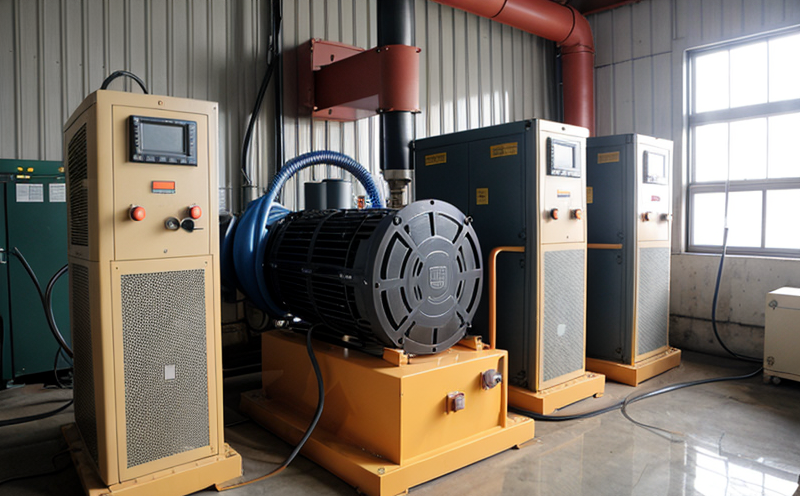IEC 60034-2-1 Motor and Generator Efficiency Testing
The IEC (International Electrotechnical Commission) Standard 60034-2-1 specifies the methods for determining the efficiency of motors and generators under specified conditions. This testing is crucial in ensuring that electrical equipment operates as expected, adhering to international standards which are essential for compliance.
The standard defines a series of tests that determine the full load efficiency (FLE) of induction motors, synchronous machines, and other rotating machinery. It provides detailed instructions on how to apply these tests under controlled conditions. The testing process involves measuring electrical parameters such as input power, output power, and power factor, while ensuring that all components are operating within their rated capacity.
For quality managers and compliance officers, understanding the nuances of this standard is vital. It helps in identifying potential inefficiencies early on, which can lead to cost savings by optimizing energy use. For R&D engineers, these tests provide critical data for product development and improvement. Procurement teams benefit from ensuring that suppliers meet stringent efficiency requirements.
The testing procedure involves several steps:
- Preparation of the specimen: Ensuring the motor or generator is in good working condition before testing.
- Setting up test conditions: Including environmental factors and load settings to simulate real-world usage accurately.
- Data collection: Gathering all necessary electrical parameters during operation under specific loading conditions.
- Analysis of data: Using specialized software to interpret the collected data against the standard criteria.
- Reporting results: Providing a detailed report that includes efficiency values, compliance status, and recommendations for improvement if necessary.
International Acceptance and Recognition
The IEC standards are widely recognized globally, making compliance with the IEC 60034-2-1 a critical requirement for manufacturers of motors and generators. Compliance ensures market access in numerous countries adhering to these international norms.
Many industries rely on this standard due to its rigorous testing protocols. Power generation equipment must meet stringent efficiency requirements to ensure optimal performance, reliability, and safety. By adhering to IEC standards, companies can enhance their reputation for quality and innovation, thereby attracting more customers and investors.
The acceptance of these tests by regulatory bodies across the globe adds significant value to businesses operating in diverse markets. It provides a consistent framework that ensures comparability between products from different manufacturers, facilitating fair competition and informed purchasing decisions.
Environmental and Sustainability Contributions
- Energy Efficiency: By ensuring that motors and generators operate at optimal efficiency levels, these tests help reduce energy consumption, which directly impacts greenhouse gas emissions.
- Resource Conservation: Efficient equipment requires less raw material input to produce the same output, leading to reduced environmental impact during manufacturing processes.
- Waste Minimization: Longer-lasting and more efficient machinery means fewer replacements over its lifetime, reducing waste generation.
Use Cases and Application Examples
This testing is particularly relevant for industries such as power utilities, manufacturing, and transportation. For instance, in the context of renewable energy generation, efficient motors play a pivotal role in maximizing the performance of wind turbines and solar inverters.
In industrial settings, these tests are used to verify that new or refurbished equipment meets specified efficiency targets before installation. This ensures not only compliance with international standards but also contributes to operational cost savings through reduced energy consumption.
For research and development purposes, this testing allows engineers to refine designs based on empirical data obtained during the test phase. It provides insights into areas where improvements can be made without compromising functionality or safety.





